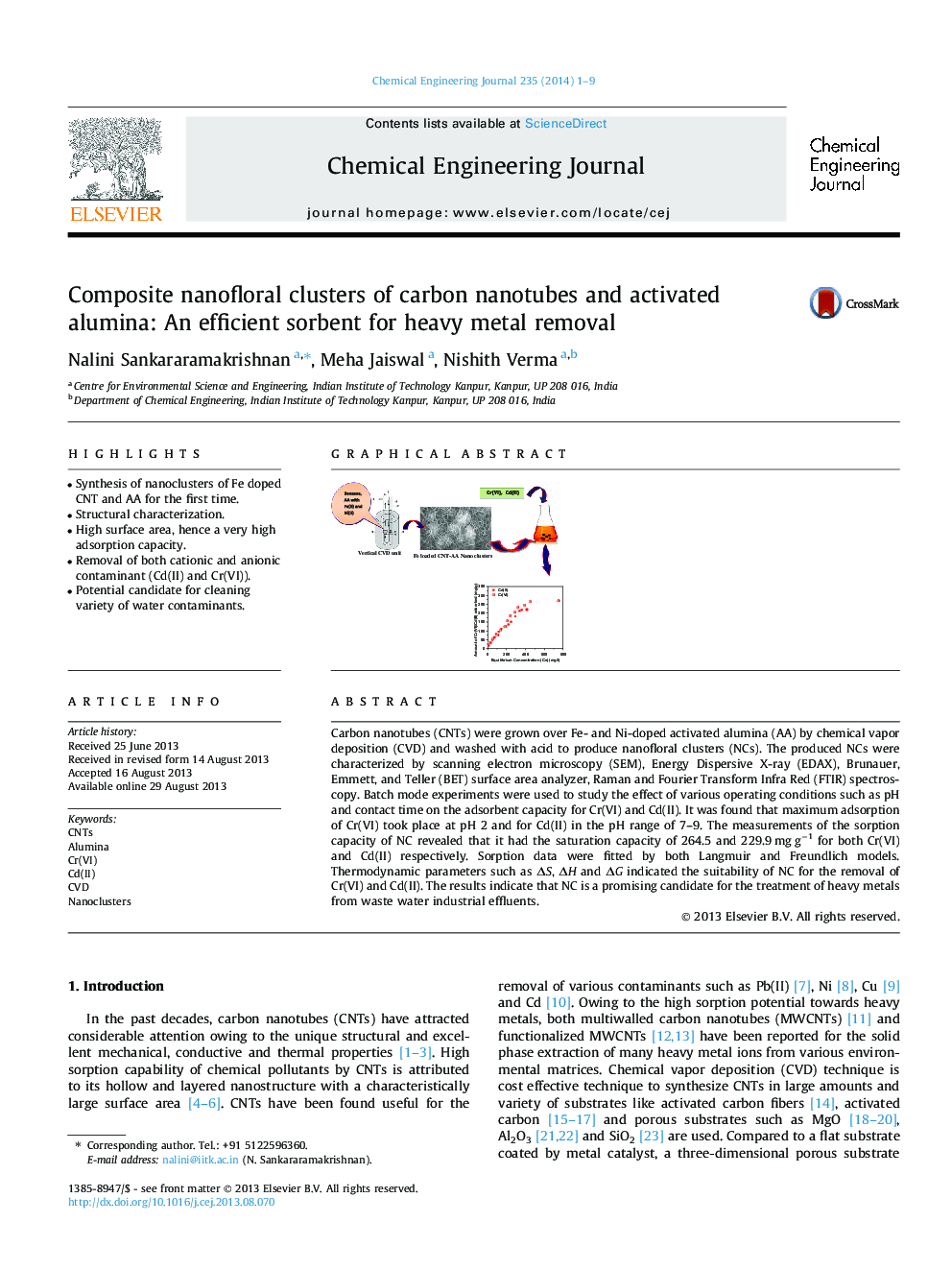| Article ID | Journal | Published Year | Pages | File Type |
|---|---|---|---|---|
| 148318 | Chemical Engineering Journal | 2014 | 9 Pages |
•Synthesis of nanoclusters of Fe doped CNT and AA for the first time.•Structural characterization.•High surface area, hence a very high adsorption capacity.•Removal of both cationic and anionic contaminant (Cd(II) and Cr(VI)).•Potential candidate for cleaning variety of water contaminants.
Carbon nanotubes (CNTs) were grown over Fe- and Ni-doped activated alumina (AA) by chemical vapor deposition (CVD) and washed with acid to produce nanofloral clusters (NCs). The produced NCs were characterized by scanning electron microscopy (SEM), Energy Dispersive X-ray (EDAX), Brunauer, Emmett, and Teller (BET) surface area analyzer, Raman and Fourier Transform Infra Red (FTIR) spectroscopy. Batch mode experiments were used to study the effect of various operating conditions such as pH and contact time on the adsorbent capacity for Cr(VI) and Cd(II). It was found that maximum adsorption of Cr(VI) took place at pH 2 and for Cd(II) in the pH range of 7–9. The measurements of the sorption capacity of NC revealed that it had the saturation capacity of 264.5 and 229.9 mg g−1 for both Cr(VI) and Cd(II) respectively. Sorption data were fitted by both Langmuir and Freundlich models. Thermodynamic parameters such as ΔS, ΔH and ΔG indicated the suitability of NC for the removal of Cr(VI) and Cd(II). The results indicate that NC is a promising candidate for the treatment of heavy metals from waste water industrial effluents.
Graphical abstractFigure optionsDownload full-size imageDownload as PowerPoint slide
